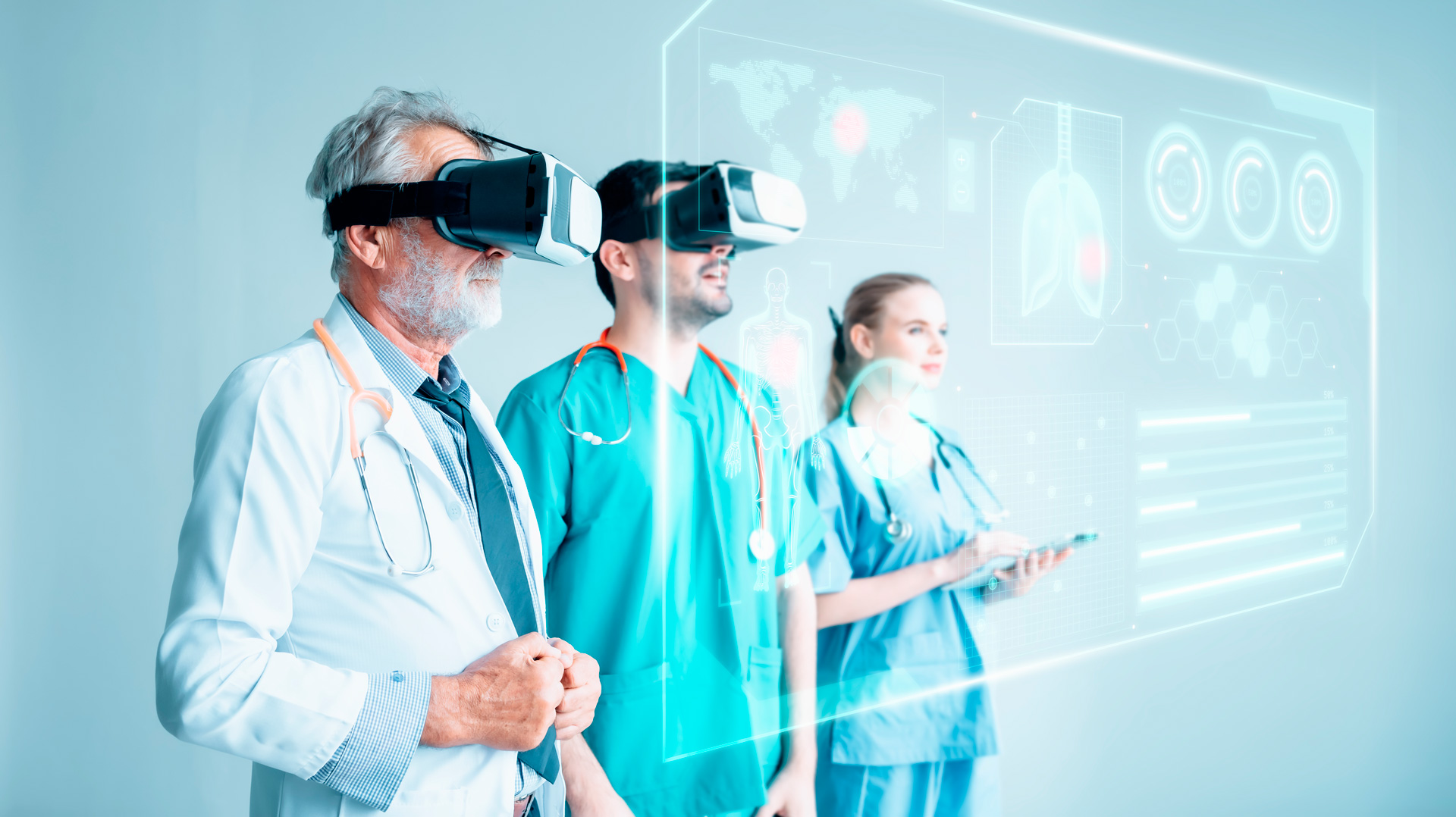In recent years, the healthcare industry has undergone a dramatic transformation, largely driven by technological advancements. From the rise of telemedicine to the integration of artificial intelligence (AI) in diagnostics and the growing popularity of wearables, digital technologies are reshaping the way we manage, deliver, and experience healthcare. As a result, the healthcare sector is becoming more efficient, accessible, and patient-centered than ever before.
In this blog, we’ll explore the key elements of this digital transformation: telemedicine, AI, and wearables, and how they are revolutionizing healthcare for both patients and healthcare providers.
1. Telemedicine: Breaking Down Barriers to Access
Telemedicine refers to the use of technology to provide healthcare remotely, allowing patients and healthcare providers to communicate through video calls, phone consultations, or even text messages. Telemedicine has existed in some form for decades, but the COVID-19 pandemic accelerated its widespread adoption, as in-person visits became difficult or impossible.
Benefits of Telemedicine:
- Increased Access to Care: Telemedicine eliminates geographical barriers, enabling patients in rural or underserved areas to receive care without traveling long distances. For example, individuals in remote regions can consult with specialists in urban areas, overcoming the limitations of local healthcare availability.
- Convenience and Flexibility: With telemedicine, patients no longer need to take time off work or arrange childcare to visit a doctor. Virtual appointments can be scheduled during off-hours or integrated into their daily routine, making healthcare more convenient for busy people.
- Cost-Effective: Telehealth consultations are typically more affordable than in-person visits, saving both patients and healthcare providers money. The ability to avoid travel expenses, long waiting times, and administrative costs makes healthcare more efficient overall.
- Continuity of Care: Patients can easily follow up with their healthcare providers through telemedicine, making it easier to manage chronic conditions and reduce the need for in-person visits. This continuity can lead to better patient outcomes and improved management of long-term health concerns.
As telemedicine continues to evolve, healthcare providers are developing new, more sophisticated platforms that incorporate AI, real-time data sharing, and better integration with electronic health records (EHR) to enhance the patient experience.
2. Artificial Intelligence in Healthcare: Revolutionizing Diagnosis and Treatment
Artificial Intelligence (AI) has the potential to dramatically improve healthcare delivery by enhancing decision-making processes, improving diagnoses, and personalizing treatment plans. AI technologies, such as machine learning (ML) and natural language processing (NLP), are being implemented across a wide range of healthcare applications.
How AI is Transforming Healthcare:
- Enhanced Diagnostics: AI algorithms can analyze medical images, such as X-rays, MRIs, and CT scans, with incredible speed and accuracy. These systems can detect early signs of diseases like cancer, heart disease, and neurological disorders, helping doctors make more accurate diagnoses faster than traditional methods. In some cases, AI-powered tools can identify conditions that may be difficult for the human eye to detect, improving early intervention.
- Predictive Analytics: Machine learning models are used to predict patient outcomes by analyzing vast amounts of medical data. AI can identify risk factors for diseases, monitor patient progress, and forecast potential complications, allowing healthcare providers to intervene earlier and improve patient outcomes. For example, AI-powered predictive models can help predict hospital readmissions or adverse drug reactions, allowing doctors to make proactive adjustments to treatment plans.
- Personalized Medicine: AI can analyze an individual’s genetic, lifestyle, and environmental data to develop personalized treatment plans. By tailoring healthcare to each patient’s specific needs, AI helps improve the effectiveness of treatments and reduces unnecessary side effects. This shift toward personalized care is already being seen in areas like oncology, where AI tools can help identify the most effective therapies based on a patient’s genetic makeup.
- Natural Language Processing: AI-powered NLP tools are helping healthcare professionals process and interpret unstructured data from medical records. By analyzing notes from doctors, nurses, and specialists, NLP can extract meaningful insights and streamline the documentation process, allowing healthcare workers to spend more time with patients rather than filling out paperwork.
3. Wearables: Empowering Patients to Take Control of Their Health
Wearable technology, including fitness trackers, smartwatches, and medical devices, has become a key part of the digital transformation of healthcare. These devices allow individuals to monitor their health in real-time, track vital signs, and even receive alerts about potential health risks.
How Wearables Are Changing Healthcare:
- Continuous Monitoring: Wearable devices like the Apple Watch, Fitbit, and other health-focused gadgets provide continuous monitoring of key health metrics, such as heart rate, blood pressure, oxygen levels, and physical activity. By tracking these metrics over time, individuals can better understand their health and make informed decisions about lifestyle changes.
- Remote Patient Monitoring (RPM): Healthcare providers can use wearables to remotely monitor patients’ conditions in real-time. For example, patients with chronic diseases such as diabetes or hypertension can use wearable devices that transmit data directly to their healthcare providers, allowing doctors to track their progress and intervene when necessary. This reduces hospital visits and enables more personalized, proactive care.
- Health Alerts and Early Intervention: Many wearables are equipped with sensors that can detect irregularities in vital signs and send instant alerts to the user or healthcare provider. For example, a wearable device might notify the user if it detects an abnormal heart rhythm or low blood oxygen levels, prompting timely medical intervention. These early warnings can help prevent serious health events, such as heart attacks or strokes.
- Mental Health and Stress Monitoring: Some wearables are now incorporating sensors that track indicators of mental health, such as stress levels, sleep patterns, and emotional well-being. By understanding how stress or lack of sleep affects the body, users can make better decisions about managing their mental health, while healthcare providers can offer more comprehensive care.
4. Challenges and Considerations in the Digital Transformation of Healthcare
While the digital transformation of healthcare offers tremendous opportunities, there are still challenges that need to be addressed:
- Data Privacy and Security: With the increase in digital healthcare tools comes the need for robust data protection. Protecting sensitive health information from cyberattacks and ensuring patient privacy remain top priorities. Healthcare providers must comply with regulations like HIPAA (Health Insurance Portability and Accountability Act) to safeguard patient data.
- Digital Divide: Not everyone has equal access to the technology needed for digital healthcare, whether it’s reliable internet access, a smartphone, or digital literacy. Addressing this digital divide is crucial to ensuring that technological advancements in healthcare are accessible to all patients, regardless of their socioeconomic background.
- Regulation and Standardization: As telemedicine, AI, and wearables become more common, healthcare regulators must establish clear guidelines to ensure the safety and efficacy of these technologies. Standardizing data, algorithms, and treatment protocols will be necessary to ensure consistency across the healthcare system.
Conclusion: The Future of Healthcare is Digital
The digital transformation of healthcare is an exciting and ongoing journey, with technologies like telemedicine, AI, and wearables driving improvements in patient care, convenience, and efficiency. By empowering patients to take control of their health, enhancing diagnostics, and enabling more personalized treatment plans, these innovations are transforming how we experience and manage healthcare.
As technology continues to evolve, so too will the opportunities for improving health outcomes and making healthcare more accessible and affordable for people around the world. The future of healthcare is digital, and it’s only just beginning.


